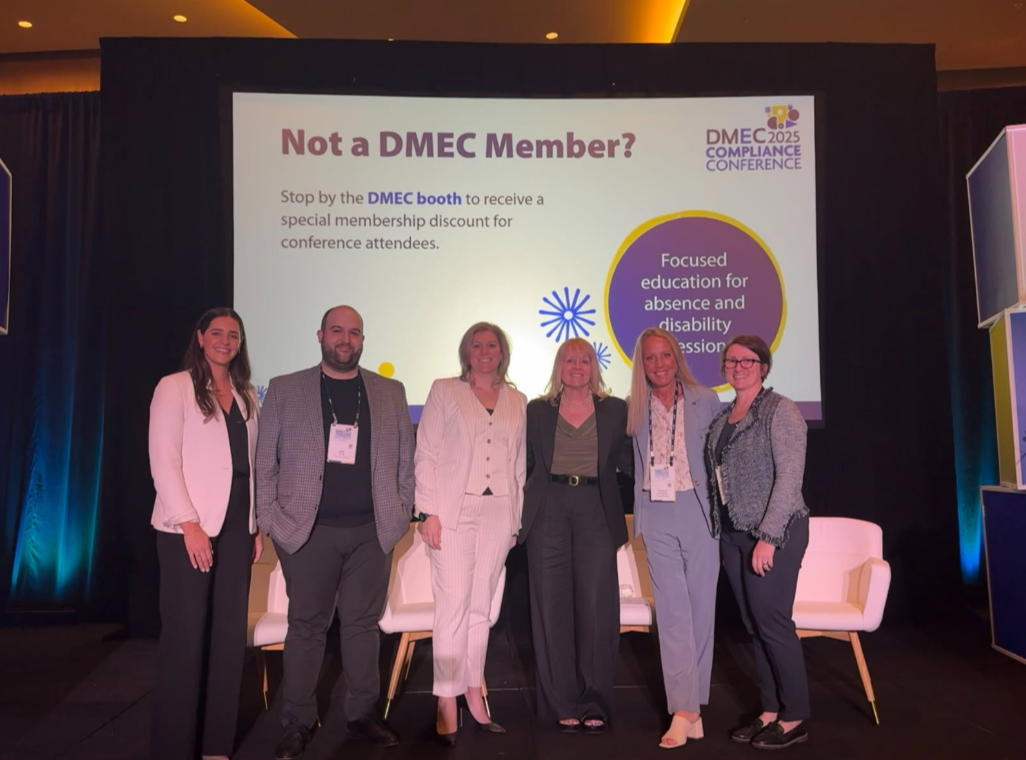I had the pleasure of speaking at The New England HR Association (NEHRA)’s Annual Legal Summit a couple weeks ago. The summit brought together attorneys, CEOs, insurance experts and HR professionals to discuss changes in regulations and laws that directly impact the workplace experience of employees. Some of the major topics discussed included how to adapt to a hybrid workforce, how to know who to hire during and cultural and legal considerations when facing substance use and mental health issues in the workplace. All in all, the conference was a great success and allowed for fantastic networking opportunities and provided guidance around a range of compliance considerations that apply to countless employers nationwide.

During NEHRA’s Legal Summit, I presented on, Piecing Together the Puzzle of the Paid Leave Landscape, in which I dove into history of Paid Family & Medical Leaves (PFML) in the US and explained the current landscape of which states provide PFML (and to what degrees). I moved on to show breakdowns on a global level for paid leave for new fathers, new mothers and for an employee with a health problem. As you’ve probably heard, data shows that the US is far behind when it comes to enacting federal legislation that provides paid family leave in comparison to the rest of the world. Without federal paid leave policies, it has fallen on individual states to create, enact and enforce paid leave policies. Of the fifty states in the US, 23 have rejected PFML proposals and have no safety net for employees who face medical or family issues that would require time off work, unless a program is provided by their employer.
After addressing some of the global and national trends, I explained some of the barriers of access to paid family leave within the US. For instance, women are 20% more likely to leave their jobs when they don’t have access to paid leave and 25% of new mothers return to work less than two weeks after giving birth1. Additionally, when breaking down access to paid leave based on race, research conducted by the National Partnership for Women & Families found that 28% of black respondents reported having requests for leave denied, compared to 9% of white workers. It is clear even within states or organizations that provide some form of paid leave, many Americans are facing very different realities when trying to utilize or understand their paid leave options.

As this was a legal summit, I tackled some of the major questions employers ask about leave surrounding compliance, costs, and leave options if they reside in a state that does not provide PFML. I reviewed some best practices employers can take when developing and evaluating leave policies such as leveraging benchmarks, looking into funding options (e.g. self-insurance, captive insurance, etc.), and utilizing technology and appropriate metrics to evaluate financial impacts. I also noted that different perspectives must be considered when developing leave policies. For instance, employees have different priorities; they are often worried about job security, getting paid and workload upon return when assessing taking paid leave. On the flip side, navigating leave from an employer perspective can be a daunting task when having to traverse FMLA, state laws, ADA/ADAAA, HIPAA, discrimination laws and more; so, it is essential to utilize resources to make sure your company is abiding by all regulatory standpoints.
All in all, I was in great company at the NEHRA legal summit! As per usual, NEHRA hosted some of the leading experts in the field and tackled major topics employers and HR professionals are facing currently. I hope to see many of you again during NEHRA’s 2022 Annual Conference in October.


